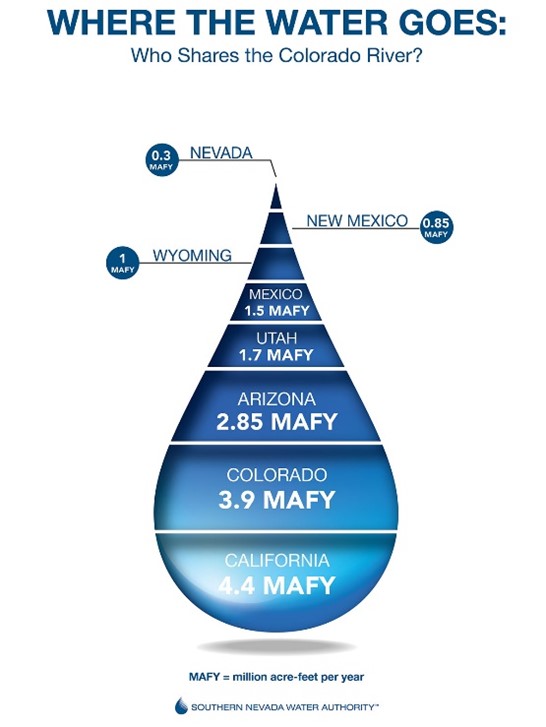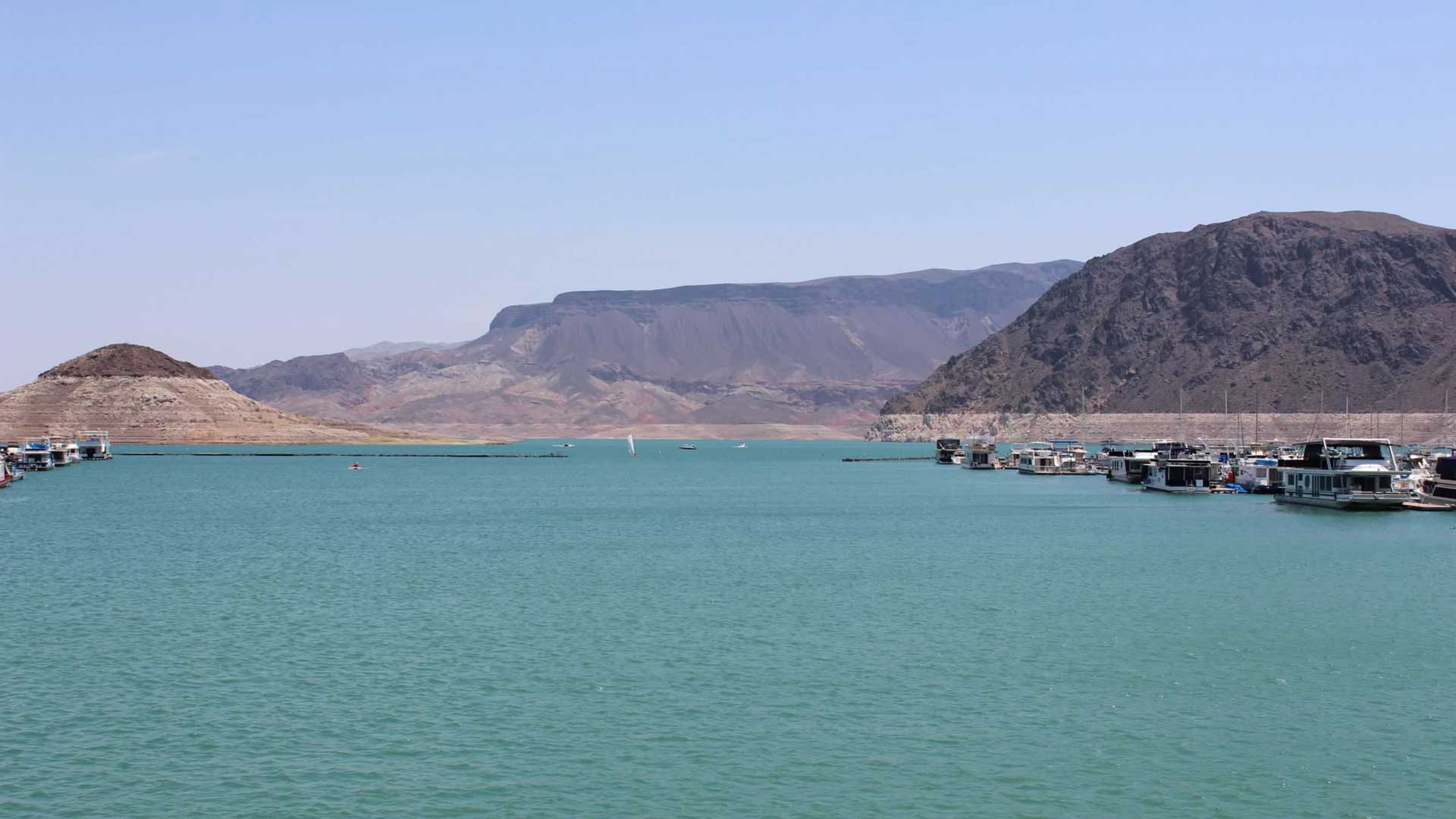Nevada is the driest state in the country. The Colorado River provides the Las Vegas Valley with 90 percent of its water, which serves roughly 70 percent of Nevada’s population, yet consumes just five percent of the state’s annual consumption. The Colorado River, however, is threatened by severe and sustained drought, a changing climate, and decades of overuse. As lawyers and residents of southern Nevada, understanding these issues and Nevada’s response will help ensure southern Nevada remains healthy and vibrant.
The “Law of the River”
The Colorado River spans seven states and into Mexico, providing water for nearly 40 million Americans. The “Law of the River” is a web of statutes, regulations, interstate compacts, and other laws, that governs the Colorado River. The Supreme Court of the United States has also issued numerous opinions pursuant to Arizona v. California – an original jurisdiction action over which the Court has retained jurisdiction for nearly 100 years. See, e.g., 292 U.S. 341 (1934) and 547 U.S. 150 (2006). The Colorado River Compact of 1922 among the seven “Basin States” of Wyoming, Colorado, Utah, and New Mexico (Upper Basin) and Nevada, Arizona, and California (Lower Basin) apportioned 7.5 million acre-feet per year (“afy”) to the Upper Basin and 7.5 million afy to the Lower Basin. Mexico is entitled to 1.5 million afy. Of this 16.5 million afy, Nevada receives a mere 300,000 afy, easily the least among the Basin States.
The Current Problem
Compact negotiators estimated that 18 million afy were available, but this was determined using a short and abnormally wet dataset. Since 1906, average natural inflow is 14.6 million afy. The basin is now mired in a 23-year megadrought. With average inflows averaging just 12.2 million afy (the driest 20-year period in 1,200 years), the Colorado River system is at a breaking point.
The problem is, therefore, obvious. The sum of allocations (16.5 million afy) exceeds the river’s supply (12-14 million afy). This “structural deficit” will require the Basin States, Mexico and Native American tribes to cooperate and reduce use by up to 4 million afy. Additionally, despite the current record snowpack in many Basin States, the supply is not expected to significantly improve. Thus, all who rely on the Colorado River must necessarily reduce their water use.
Stakeholders have been regularly negotiating to find solutions. The Bureau of Reclamation represents the federal government in these negotiations. The Colorado River Commission of Nevada, under the governor’s purview, and the Southern Nevada Water Authority (SNWA) are Nevada’s representatives. Native American tribes also hold significant rights to Colorado River water and will play a critical role in any long-term resolution. While stakeholders have made marginal progress, no agreed-upon solution to fix the structural deficit and sustainably use Colorado River water is readily apparent.

Nevada’s State and Local Government Response
In the interim, Nevada is acting at the state and local levels. In 2021, for example, Nevada enacted A.B. 356 to conserve water by eliminating nonfunctional turf. At the municipal level, new ordinances concerning evaporative cooling and golf course irrigation will also soon take effect. Also, in the 2023 legislative session, S.J.R. 3 encourages the Bureau of Reclamation to take aggressive action to protect the Colorado River.
Of these efforts, A.B. 356 will result in the greatest water savings. Under A.B. 356, and beginning January 1, 2027, water from the Colorado River generally “may not be used to irrigate nonfunctional turf.” In addition, A.B. 356 directed SNWA to establish a process for the removal of such turf and to form an advisory committee comprised of commercial, industrial, and residential representatives to help define the term “nonfunctional turf” and create other assessment tools. A.B. 356 targets turfgrass because, unlike water used indoors that is ultimately returned to Lake Mead, turfgrass consumes the water so it cannot be reclaimed, treated, or used again. This is why southern Nevada’s conservation efforts are focused on outdoor water use. Notably, A.B. 356 does not require single-family residences to remove turf.
Conclusion
Nevada has made extraordinary strides to conserve Colorado River water that provide an example of how to reduce water consumption in urban areas and show that bringing uses in line with water supply will require cooperation and reductions in use from all states and all industries. With such a small apportionment, however, Nevada cannot conserve enough water to significantly impact the structural deficit. The problem will ultimately have to be resolved through a consensus-based approach, unilateral federal action, or litigation. Until then, Nevada will continue its pioneering conservation efforts and urge others to do the same.
About this article: This article was originally published in the “Natural Resources” issue of Communiqué, the official publication of the Clark County Bar Association, (May 2023). See https://clarkcountybar.org/member-benefits/communique-2023/communique-may-2023/.
About the photo
Photo of Colorado River from 2015 courtesy of Heather Anderson-Fintak.
About the author
Steven C. Anderson is Deputy Counsel for the Southern Nevada Water Authority and the Las Vegas Valley Water District. Steven has been an attorney in Nevada for 13 years. For seven of those years, he has served as in-house counsel for SNWA practicing natural resources and environmental law.
© 2023 Clark County Bar Association (CCBA). All rights reserved. No reproduction of any portion of this issue is allowed without written permission from the publisher. Editorial policy available upon request.

